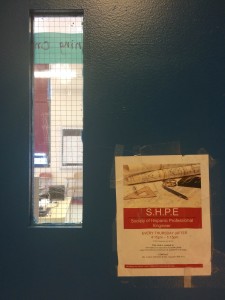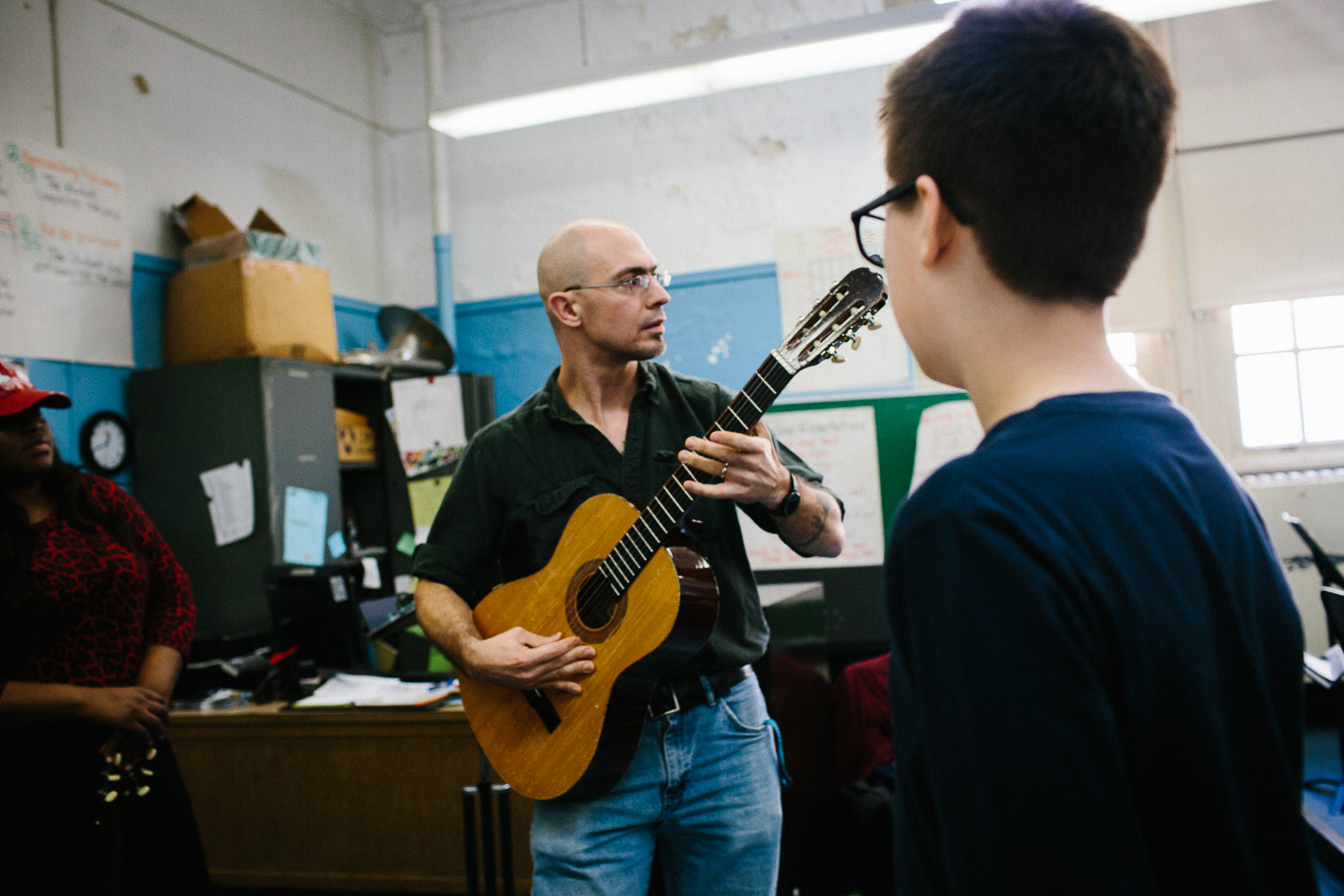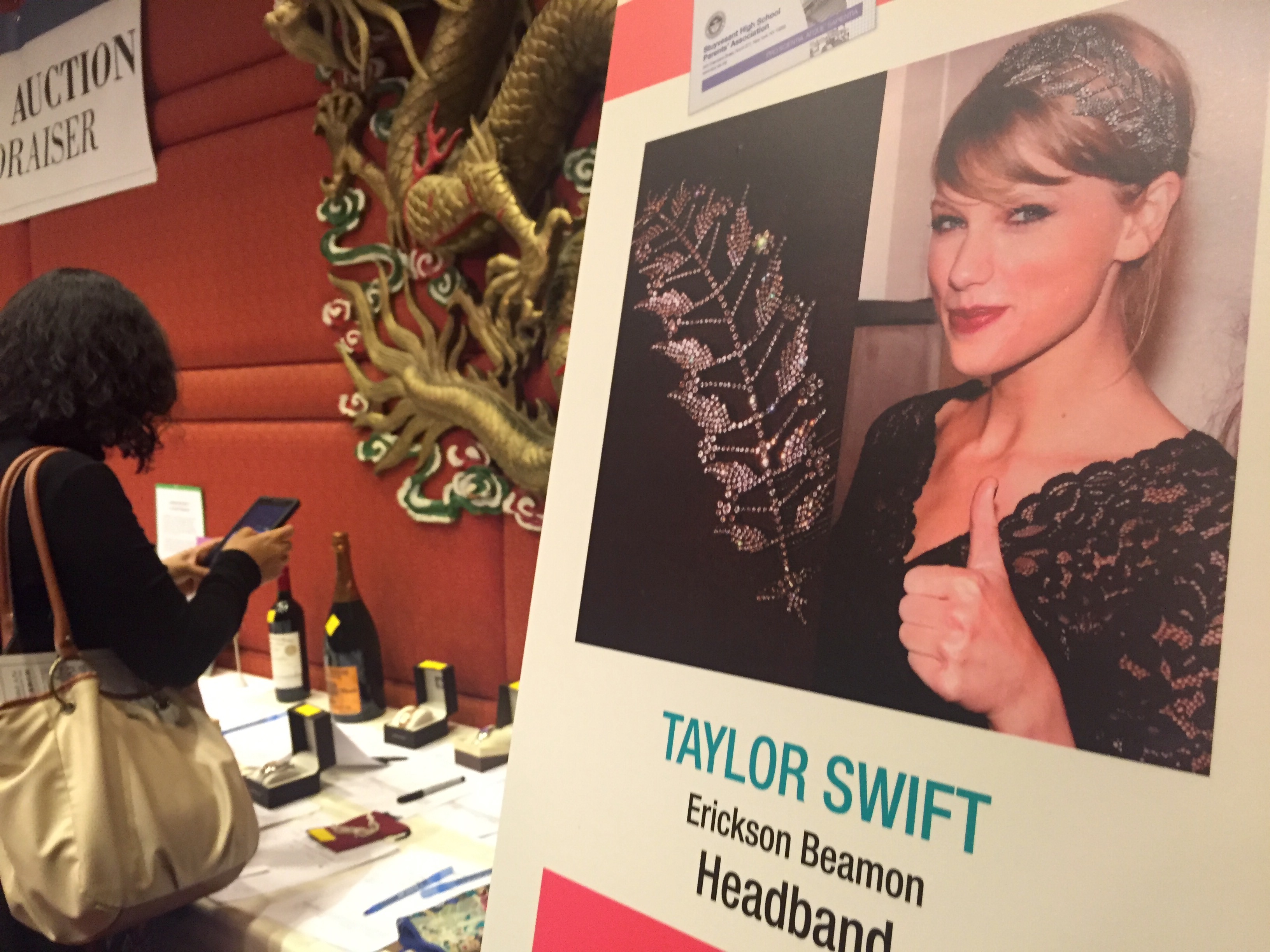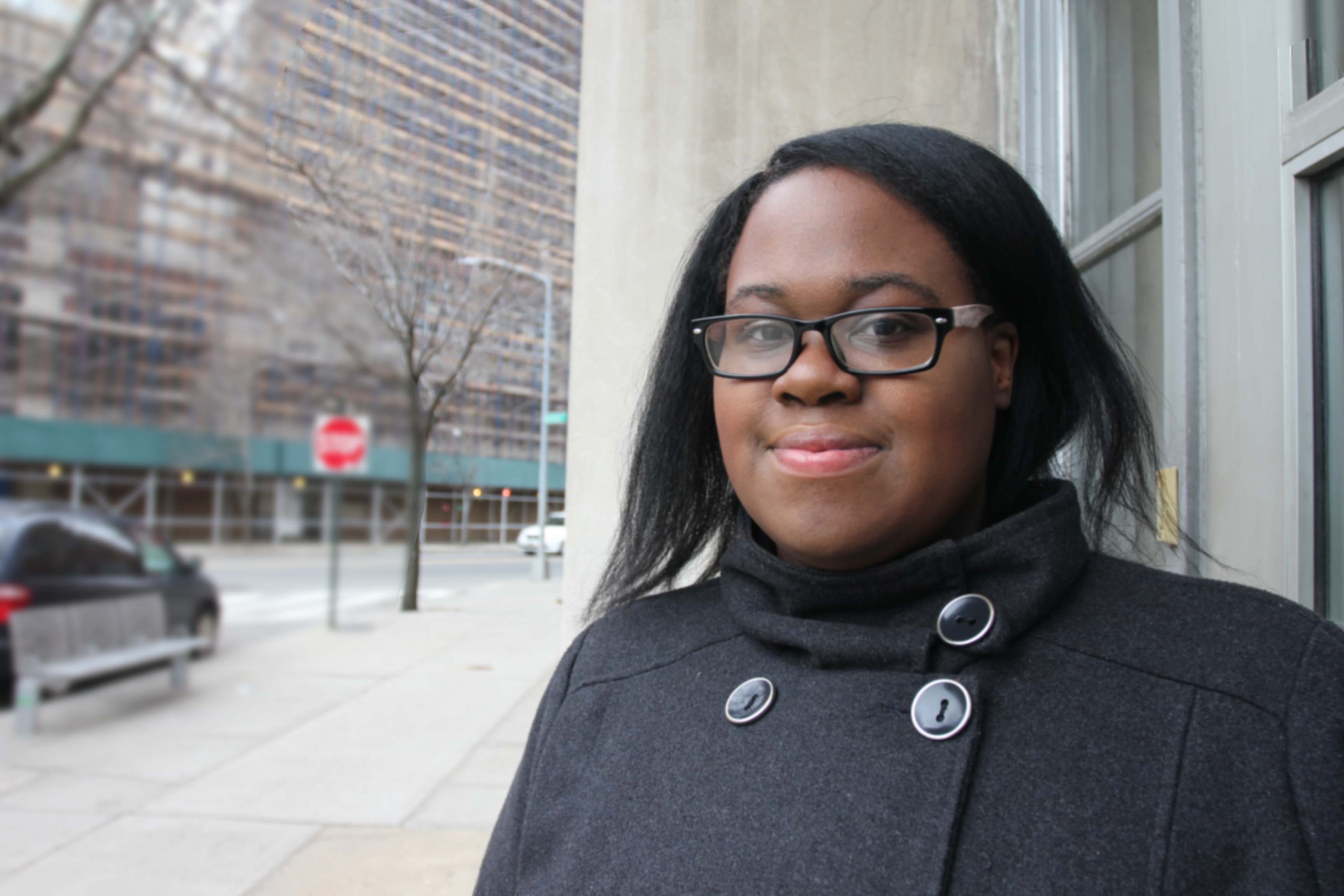
Vidya Gawade’s classroom is home to her living environment class and to a chapter of the Society of Hispanic Professional Engineers.
In 2011, when Chandanie Ramjit started her first year at a new high school in Crown Heights, she didn’t know what she was getting into.
“At first I wasn’t really sure what I wanted to do,” Ramjit said. “There was a lot of work – way more than a traditional high school.”
She was one of 34 girls who enrolled in the founding school: Pathways in Technology, an early college school that combines traditional high school coursework with a focus on STEM, short for science, technology, engineering and math. The school is intended for 9th through 14th graders and aims to graduate students both with a high school diploma followed by an associate’s degree at a City University of New York community college.
Now, in her fourth year of high school, Ramjit is about to finish her Java coding class for the semester, and she plans to pursue a career in computer science.
“Being here really helped me find my passion,” Ramjit said. Currently she’s applying to summer internships in the field.
Since P-Tech’s founding, about 30 percent of its student population have been girls, according to data from the New York department of education. And many of those girls from the first class, also called “legacies,” have forged a new career path.
“About 20 of the 34 [female] legacies that have come in our doors, many of them have gone on to pursue STEM-related fields,” said Josephine Tucker, assistant principal at P-Tech, whether in summer technology internships or pursuing degrees to become emergency medical technicians.
This is also the school’s first P-Tech class to graduate with associate degrees, and of its six students, only one of them is female.
Tucker said that in the past few years, there have been more opportunities for young girls to enter science fields through nonprofit scholarships and summer mentorship programs. Bringing more gender diversity to the workplace starts in the classroom.
On the national level, the Obama administration in March dedicated about $250 million to encourage girls and other minority groups to enter STEM-related fields in order to meet the country’s increasing demand for computer scientists. Nonprofit organizations like Girls who Code have more than 160 clubs across the country, and has brought in more than a thousand high school girls to shadow women in tech startups across the country.
All these efforts attempt to address the decades-old gender gap. According to the U.S. Census Bureau, even though about half of the national workforce is made up of women, less than 20 percent of them have jobs in computing and engineering fields. At the same time, women in these fields make about 33 percent more than women in other fields, according to a White House report. Educators say access to these jobs allows more economic opportunities.
“This is a social justice issue,” said Colleen Lewis a professor at Harvey Mudd College who specializes in gender and diversity issues in the field. “Computer science jobs are high-status and high-paying, and people in this country are systematically excluded from participating in that.”
Other advocates say including girls brings new ideas in STEM-related fields.
“Increasing the number of women in STEM jobs is good for business,” said Ana Kay Yaghoubian, STEM Manager at the American Association of University Women. “Diversity fosters innovation through the infusion of new ideas and perspectives, and that in turn enhances our global competitiveness.”
The association advocates gender equality in the workplace and classrooms. This past year IT published a study called “Solving The Equation” on how to bring diversity into STEM fields, and based on what they found, it’s going to take a lot more than money to bridge that gap. Women face longstanding gender biases. When it came to hiring situations, women were judged as less competent than men for mathematical tasks. The study also found these biases could be traced back to the classroom, where girls see math classes as a boys club.
–
On a breezy May afternoon, fresh after lunch, students filed into Vidya Gawade’s living environment class. That day they were learning about inversion species. It was a small class of 10, and two of them were girls.
“Who did the homework?” Gawade asked. A slender wrist wrapped in gold bangles shot up, followed by a beaming smile. She pulled out a pen from her zebra print clutch to take notes.
That’s ShuDon Brown, a third year student. At only 15, she was performing well above her age group, scoring one of the highest regents science score at school. She is a straight-A student with a strong interest in math and science. She has already taken most of her Advanced Placement math and science courses and is on a fast track to earn her associate’s degree. After high school, she plans to pursue a career in Computer Systems Technology.
“My mom was an 8th grade math teacher,” Brown said with a wide smile, “and I used to sit in her class and loved learning from her. I remember in third grade, all my classmates would be like, ‘Help me out with my math homework!’ and I really loved it.”
Brown’s family had had always encouraged to pursue her math and science interests. It wasn’t until she reached middle school where she felt embarrassed.
“I just felt really weird about it,” Brown said. “People thought I was dorky. They said science and math are boy stuff. I remember hiding it from some of my friends back then.”
That’s what drew Brown and her mother to P-Tech, a school that encourages students from minority backgrounds to enter STEM-fields. This past year, the school co-started a National Society of Black Engineers and Society of Hispanic Professional Engineers chapters at the school.
“Here, I can be myself,” Brown said. “Most kids here are interested in what I’m interested in, even the girls.”
According to research scientists like Brenda Britsch from the National Girls Collaborative Project, having female role models in the field keeps girls engaged.
“We talk about a lot about positive messaging,” Britsch said. “When you see scientists from similar backgrounds and you study with students from similar backgrounds, you’re more likely to succeed.”
The national project hosts programs that bring together schools and organizations that are commit to encouraging girls into STEM fields. According to Britsch, another way to keep girls engaged is to make coursework more relevant to their lives.
“Engineering and computer science impacts the world we live in. We know that doing hands-on work really helps,” Britch said. “If students have a choice of what they study and how they apply it, it makes [the field] personally meaningful.”
At P-Tech, one of Brown’s favorite courses is her coding class, and recently, they all had to design an “about me” website. She saw it as a way to use technology to express herself.
While most of her male classmates made pages in a plain or blue background, she designed hers with pink sparkles.
“They all laughed at me!” she said. “But I was like, ‘what? I think it looks great. Someone has to find it appealing.”
–
Back in Gawade’s classroom at P-Tech, Eyanna Whitfield was quietly making brochures for her assignment on environment and sustainability. As a second-year student, Whitfield had taken the prerequisite math courses to graduate and said she had a natural ability for the field.
“I was really good at fixing my mom’s stuff like her cell phone and laptop,” Whitfield said, “and she thought engineering would be a good job.”
While she does well in her math and science classes, Whitfield said she had other passions.
“I really love dance – tap, jazz, hip-hop, anything and being an artist,” Whitfield said. “When I was looking for high schools to go to, I wanted someplace where I could do that. Engineering is cool too.”
While Whitfield’s family encourages her to stay on the engineering career path, some scientists say women should not be pushed into these fields.
“There’s this assumption that we should see women in 50 percent of any field,” said Denise Cummins, a research psychologist and a fellow of the Association for Psychological Science, “and if we don’t meet that criteria, then something nasty must be working under the surface.”
The gender gap in the sciences is exaggerated, said Cummins. According to the national science foundation, women already hold as many degrees as men in social sciences, biosciences and psychology. Both genders are almost equally represented in those workplace fields as well.
Even at childhood, Cummins said, boys are more inclined in mechanical sciences. According to a study at the National Center for Biotechnology Information, boys were more likely to play with mechanical toys like Legos over dolls while girls showed equal interest in both.
While Cummins agrees that women still face barriers in these fields, we shouldn’t discourage girls from pursuing other jobs that are predominately female.
“People should pursue what’s intrinsically interesting to them,” Cummins said. “What I would like to see would be girls taking more pride in things that are intrinsically interesting to us.”
But for advocates like Brenda Britch, more work needs to be done.
“When you have so much in society telling you what you can and can’t do from the time you’re born, it’s hard to make that argument,” Britch said. “It’s not just providing equal opportunity to engage, it’s about changing the culture of the field.”
According to the “Solving Equation” study, women in engineering and computing reported less job satisfaction and were more likely to experience undermining behaviors by co-workers and supervisors.
For star students like ShuDon Brown at P-Tech, having more girls in classrooms is one way to change the culture.
“Boys can be really intense and competitive and want to get things done as soon as possible,” Brown said. “But when you have girls in these classes, we can be like ‘relax! It’s fine. Let’s work on this together …We can bring new ideas and we can show boys that tech and coding can be fun and feminine.”
Like many students, Brown is applying to summer mentorship programs. She’s already in the final round of interviews for her dream internship at a tech firm.
As much as girls can contribute to these fields, Brown believes girls could gain a lot from it too.
On Brown’s pink sparked website, she mentioned about her plans for the future. She has a map of San Francisco, and she talked about her dreams of attending San Francisco State University. While her family has traveled the east coast, she’s never been to the west coast and she yearns to see the world. The tech firm she’s interviewing at has a base there as well.
“I heard it was nice and warm all the time, and everyone is really friendly,” she said, smiling, scrolling through photos of San Francisco.
And as she moves forward with her career path, she’s one step closer to closing the distance on that dream.



